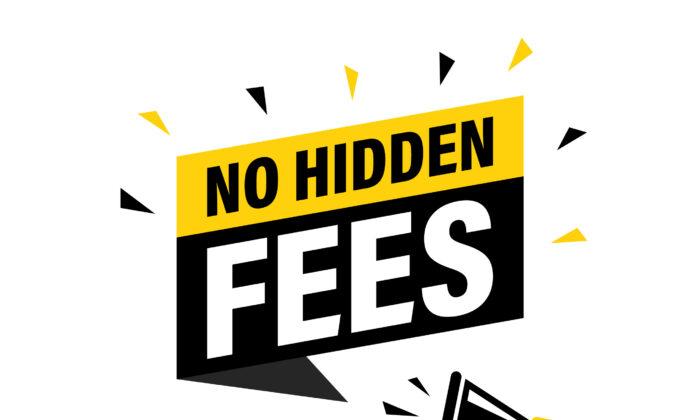As consumers, we often ignore reading the terms and conditions. From booking airline tickets, taking out insurance, or even a simple purchase from your favorite clothing store; reading the fine print is not something we tend to spend a lot of time on.
Yet, we live in this hyper-digital world, where all our information and data is shared online. Thus, we want to ensure that companies take extra precautions to ensure the safeguarding of our valuable personal information.
But even something as simple as agreeing to the Terms of Service (TOS) when updating a mobile app, or software program on your computer without actually spending some time reading it can come at a cost.
What Is the “Fine Print”?
The “Fine Print” or Terms and Conditions is a legally binding agreement between you and a company or business. When purchasing a product, or service from a company, they tend to send you terms and conditions agreement that outlines your rights as a consumer. In many ways, it’s said that the terms of service also exist to protect the company against any liability or legal proceedings if a product is faulty, or a service is not as you’d expected it to be.You can think of the fine print as a legal contract between you and the company, as it states what your rights are in the event of a dispute, and how the company and legal proceedings will be delegated.
Five Ways You Can Save Money by Reading the Fine Print
Reading the fine print, albeit an extremely tedious process can help you save money on purchases, subscription services, or insurance plans. Even taking the time to skim over the Returns Policy of a retail outlet can do you a great deal when you’re looking to return or exchange a product.1. Fees and Interest Rates on Loans
When we’re faced with having to take out a loan, for whatever reason it may, a lot of the time our loan agreement contract with the bank or financial institution is a lengthy and complex document that contains hard-to-understand words or terms.- Hidden Fees
- Late Payment fees
- Transfer fees
- Annual or quarterly fees
- Overage fees
- Interest Rates
- Annual Inflation Increases
Yes, some insurance brokers tend to adjust your annual premium, or a monthly payment based on the way inflation increases year over year.
This is sometimes referred to as “adjusted for inflation” or “inflation-adjusted rates” which will indicate the percentage your monthly premium will increase the following year.
2. Restocking Fees
eCommerce and online shopping have almost redefined the consumer environment completely in the last few years, making it easier and more convenient to find your favorite products online and get them delivered to your home within a few days.Spending money on goods, especially clothing, shoes, and other items, you tend to miss that some companies and online retailers could charge you a restocking fee in case you’re looking to return your newly purchased goods.
Yes, retail companies can charge you, the buyer, a fee for returning an item for whichever reason. The restocking fee, which is sometimes included in the Returns Policy of the retailer, can range from 10 percent to 25 percent of the item cost, or a perhaps flat fee.
Additionally, a restocking fee can also be included on a variety of items, and are still subject to tax. That means you will be paying tax on the item you’re returning, plus the initial restocking fee.
3. Buy Now Pay Later Promotional Deals
A deal that sounds too good to be true is just that.Ever noticed that some businesses, especially clothing retailers and furniture outlets tend to have a Buy Now Pay Later promotional deal? Yes, these ads offer us a short-term solution if you’re looking to purchase a big household appliance right now, but don’t have the free flow cash to do it.
A Buy Now Pay Later or BNPL promotion allows you to purchase an item on “credit” and not have to pay anything for a certain amount of months. The amount of time can range anything from 3 up to 12 months, and depending on the purchase amount, you will need to repay it when the period ends.
Let’s say, for example, you purchased a TV for $1,599. First off, there can be an administrative fee on that purchase, which can either be a flat fee or a percentage of the purchase.
After 12 months, you’re expected to repay the full $1,599 one day after the 12 months, plus interest on the 12 months. Some companies can charge you the $1,599 and require you to repay the interest in installments, this is known as waived interest.
Another option would be that companies charge you the full $1,599 plus 12 months’ worth of interest the day after your 12 month period ends—this is referred to as deferred interest.
- $1,599 x 20 percent interest/100 = $319,80 interest
- $319,80 + $1,599 = $1,918,80 total repayment amount.
4. Purchase Protection
Have you ever purchased an item with a credit or debit card, only for that item to be faulty, broken, or stolen right after being purchased. Well, some credit card companies offer what’s known as “Purchase Protection” allowing you to claim back the amount spent on items that were either lost, stolen or damaged.- Purchases are covered for 60 days from the date of purchase as indicated on your receipt.
- Purchases can receive a full refund from Mastercard if you are unsatisfied with your purchase and stores deny returns or refunds.
- Gifts purchased with your card are also covered.
It is good to mention that Mastercard does not offer any coverage for rates, fees, taxes, or delivery charges, but only the exact amount on the item.
Although it’s not something that will save you money daily, it remains a clause within the agreement with Mastercard that you can utilize if you find yourself in such a scenario.
5. Travel Insurance
Yes, traveling is not what it used to be pre-COVID, but we’re still happy to be back in the air, and ready to explore again.Unfortunately, there’s only a limited amount of things that can or are already covered under that seemingly cheap or free travel insurance policy.
That’s right, in some instances, you might not even be covered in case your flight gets canceled, or if you miss your flight completely. Lost luggage at the airport? Not covered. Missing your passport or were your personal items stolen? Not covered. Need to visit the emergency room? Not covered. Pre-existing medical conditions? Not covered.
Travel insurance is one of the many places people tend to lose out because they don’t take an extra few minutes to simply read the terms and conditions—and companies know this.
Whether you’re only taking a trip from Los Angeles to New York for three days, or backpacking in Europe this summer, travel insurance does have its perks, but you can also shoot yourself in the foot if you set out to pay an exorbitant amount, simply to not even claim your lost baggage.
Honorable Mention—Flight Delays From American Airlines
As travel opens back up, we thought it good to include this tip shared by U.S. lawyer and founder of Plug and Law, Erika Kullberg.Erika currently has a Tiktok page, with more than 11 million followers, and shares various tips and tricks on how reading the fine print can save you a lot of time and money.
In one of her most popular videos, Erika shared that American Airlines will cover the cost of a hotel for the night if you are unable to board your American Airlines flight by 11:59 pm if it’s delayed due to issues such as mechanical problems.
This specific clause is found in the Condition of Carriage Terms and is included in all tickets purchased with American Airlines.
The Bottom Line
There’s no better way to put it, but you need to start reading the fine print before signing or accepting any terms or conditions.Reading the fine print itself won’t save you money, but it will give you a better idea of what you are getting yourself into, and what you are signing up for.
Yes, there are ways you can save money, or receive a reimbursement for purchases, all you need to do is read what the terms and conditions are.






